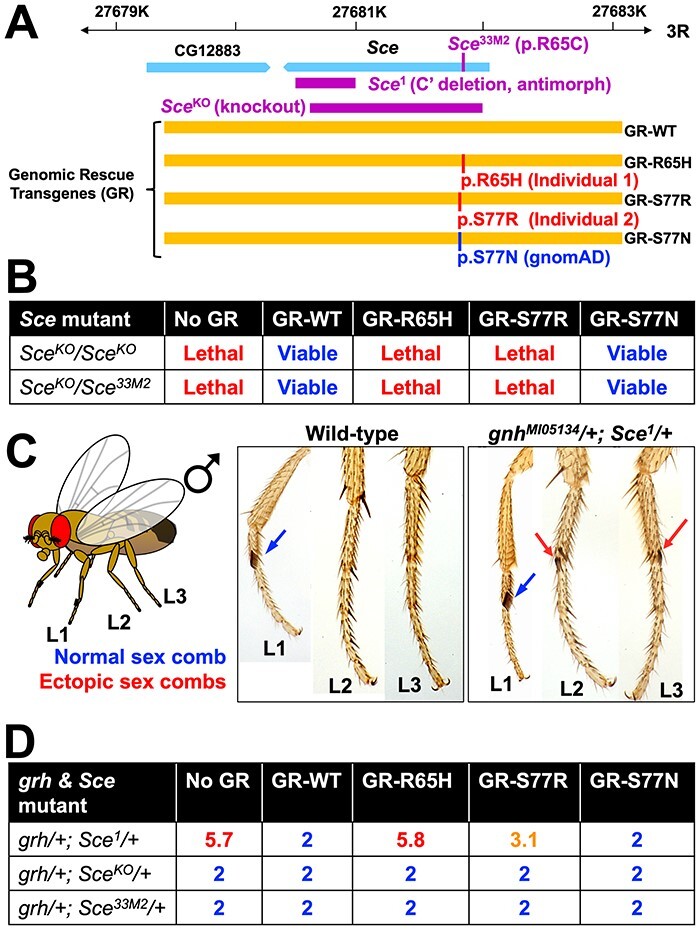Figure 3 .

Drosophila lethality and homeotic transformation phenotype rescue experiments demonstrate that mutations in Sce corresponding to patient variants in RNF2 are LoF alleles. (A) A schematic diagram of the Drosophila Sce locus [third chromosome right arm (3R)] and the genomic rescue (GR) constructs inserted on chromosome 2 (VK37) of the fly. The relative locations of the mutations/variants used/studied in this work are shown using the Sce gene or GR constructs, respectively. (B) Lethality rescue experiments in Drosophila of recessive lethal Sce alleles using GR-WT or variant (GR-R65H, GR-S77R, GR-S77N) Sce protein. GR-WT and GR-S77N (gnomAD variant) are able to rescue the lethality caused by loss of Sce function, whereas GR-R65H and GR-S77R variants fail to do so. (C) A diagram and photographs of Drosophila legs from WT and grhMI05134/+; Sce1/+ male flies. Endogenous or ectopic sex combs are shown using blue or red arrows, respectively. A WT fly always has two sex combs (one on each L1), whereas grhMI05134/+; Sce1/+ male flies develop ectopic sex combs in L2 and L3 legs at high frequency. (D) Average number of legs with sex combs per animal in grhMI05134/+; Sce1/+ male flies with or without WT or variant genomic transgenes. We scored all six legs per fly for the presence of sex combs. GR-WT and GR-S77N (gnomAD variant) are able to rescue the ectopic sex comb phenotype in grhMI05134/+; Sce1/+ double heterozygous flies, whereas GR-R65H fail to do so. GR-S77R has weak activity in this assay. Note that while the antimorphic Sce1 genetically interacts with grhMI05134 to induce ectopic sex combs in most legs, LoF Sce alleles (SceKO and Sce33M2) do not show this defect. Further introduction of genomic rescue transgenes that express WT or variant Sce also do not modify this phenotype in grhMI05134/+; SceKO/+ and grhMI05134/+; Sce33M2/+ animals.
